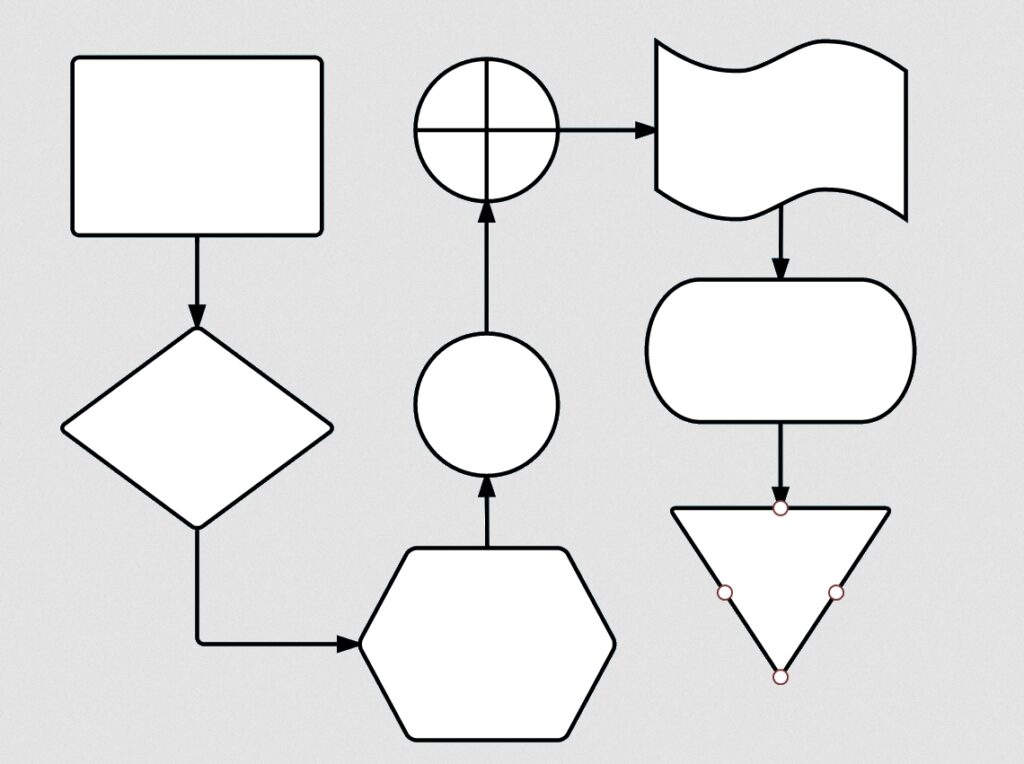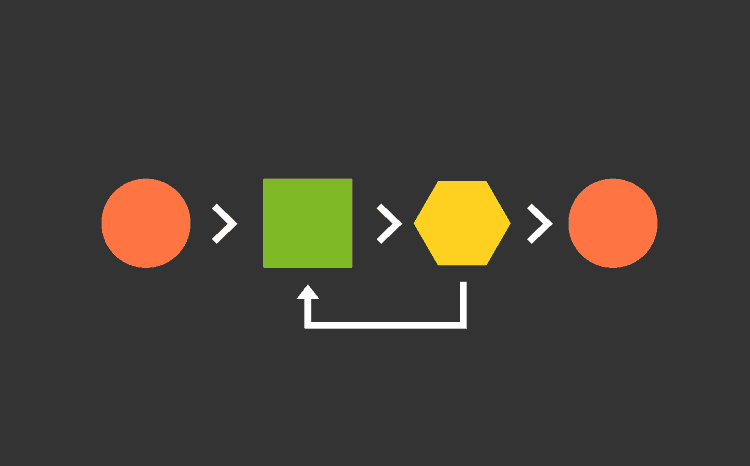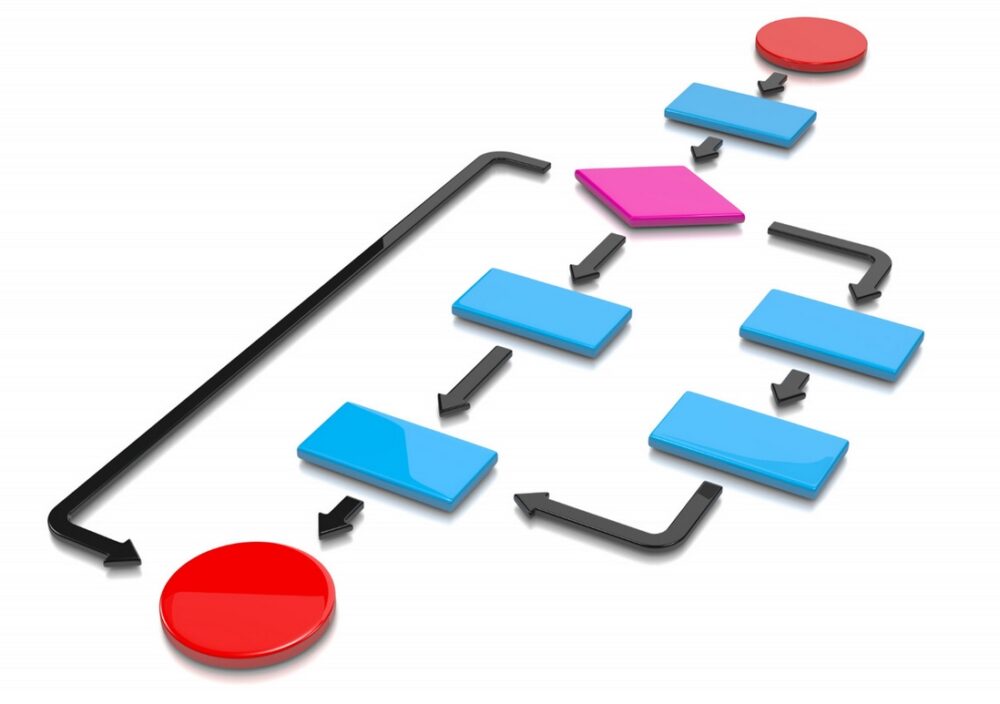Flowcharts are an essential part of every business. But, if you don’t understand the basics you’ll find it hard to get around. While they tend to simplify the process if you’re not at least a beginner in understanding a diagram they won’t be too helpful. To avoid unpleasantries like these we’re about to share some knowledge about flowcharts with you. If you’re still not fully invested in flowcharts the reason must be the lack of understanding of symbols and notation associated with these diagrams.
There’s no shame in not knowing the basics if you’re a rookie in your business field. The shame lies in the fact of not wanting to learn. As we see you reading this article you’re prepared to learn the same way we’re ready to share a few words of wisdom. To help you best understand the letters and shapes used in creating a functioning diagram we’re going to stick to the most common types. When you learn from scratch you can later add one more and more knowledge in this department. As your business grows so will the size and the shape of a flowchart.
Don’t be scared by the magnitude these things can reach. As we said, the bigger the business, the bigger the processes, and so are the flowcharts. But, it’s vital to remember that they shouldn’t be too complicated, as they intend to make the whole process easy to understand. Now, after a brief introduction let’s move on to the 5 things every business owner should know about flowchart symbols & notation.

1. The Terminal Symbol
Let’s repeat ourselves once again – we’re starting from the basics. So, the place where every business owner needs to start is the bottom. When you’re drawing the first symbols on a flowchart you’ll start with the terminal symbol as good people from zenflowchart.com would name it. The name shouldn’t surprise you despite sounding damning; it’s there to signal the start of a diagram. But that’s not all. The name makes sense when you know that it’s used for both the beginning and the end of a flowchart. Any process has a start and an end and you’ll mark it with this symbol. It also goes by many other names such as the oval or the terminator. No, we’re not talking about Arnold Schwarzenegger, it’s much more sincere. So, to create a flowchart and explain the sole beginning of a process all you need to do is to draw a terminal symbol. Piece of cake. Also, don’t forget that when the whole thing is done, you also need to put one of these.

2. A Sign of the Rectangle
This is the next step in creating a flowchart and every business owner should know about it. You’ll find it interesting that we used the quotation that it is the next step. It is in every sense of that word. A rectangle in flowchart is used precisely to mark the steps in a process. When the process is started by a terminal symbol the next one you’ll use without a doubt is a rectangle. But, be sure to know that it’s not only used for the first step in a diagram, it can be also used later on for every step of the way. In a sense, this symbol is like cowbell running back in the NFL (read Zeke Elliott) as it’s used more than any other symbol (player).

3. The Arrow
A flowchart is a straightforward process. To make it like that you need to be able to point people in the right direction. This is where the arrow symbol comes into play. No matter how complicated a process is within your organization a good flowchart will break it down into pieces. An arrow has to point the directions on a diagram. From one step to another; from one location to a location. It’s a simple method used to path out the diagram and make it an understandable map. What you should know is that these arrows come in many shapes and sizes. But, as we said, make it simple, to stick to one shape or at most two on one flowchart.

4. Jewelry and Flowcharts?
Are we talking about luxury here? In a sense, yes. But, it’s not what you think. It’s about the diamond shape which is heavily used in flowcharts. When you own a company you’ll learn to appreciate a good flowchart and you’ll see it as a treasure. The diamond is a vital part of any diagram and it’s used mostly to signal a decision. When you see a diamond on a flowchart it means that the time is for someone in the organization to make a decision. Not a decision like LeBron James made or the one Deshaun Watson is trying to make right now but a true business decision in every sense of the word. It could be one decision that will move the process forward, or it could be multiple decisions that will expand the flowchart adding more steps to it. By now, you know that you need to use an arrow to change the direction, and then add a rectangle to create an additional step. When it’s all said and done, you are back to using the terminal sign.

5. The Connector Symbol
When you say the connector most people familiar with flowcharts will know what you’re talking about. In most cases you’ll see it as a flat circle, so don’t let your imagination carry you too far with the connector symbol term. This circle is used in more complicated diagrams. The simple ones can rely on the most basic symbols. When you’re using a circle you have moved the whole thing one step forward. So, when a diagram gets too complicated you’ll be using the connector to bring together various elements from the process tied to one place on one page. Don’t let this scare you, as it is still not too complicated. With all the symbols above combined, you can already make a pretty good flowchart. All you need to do is to start. The terminal sign, remember?





